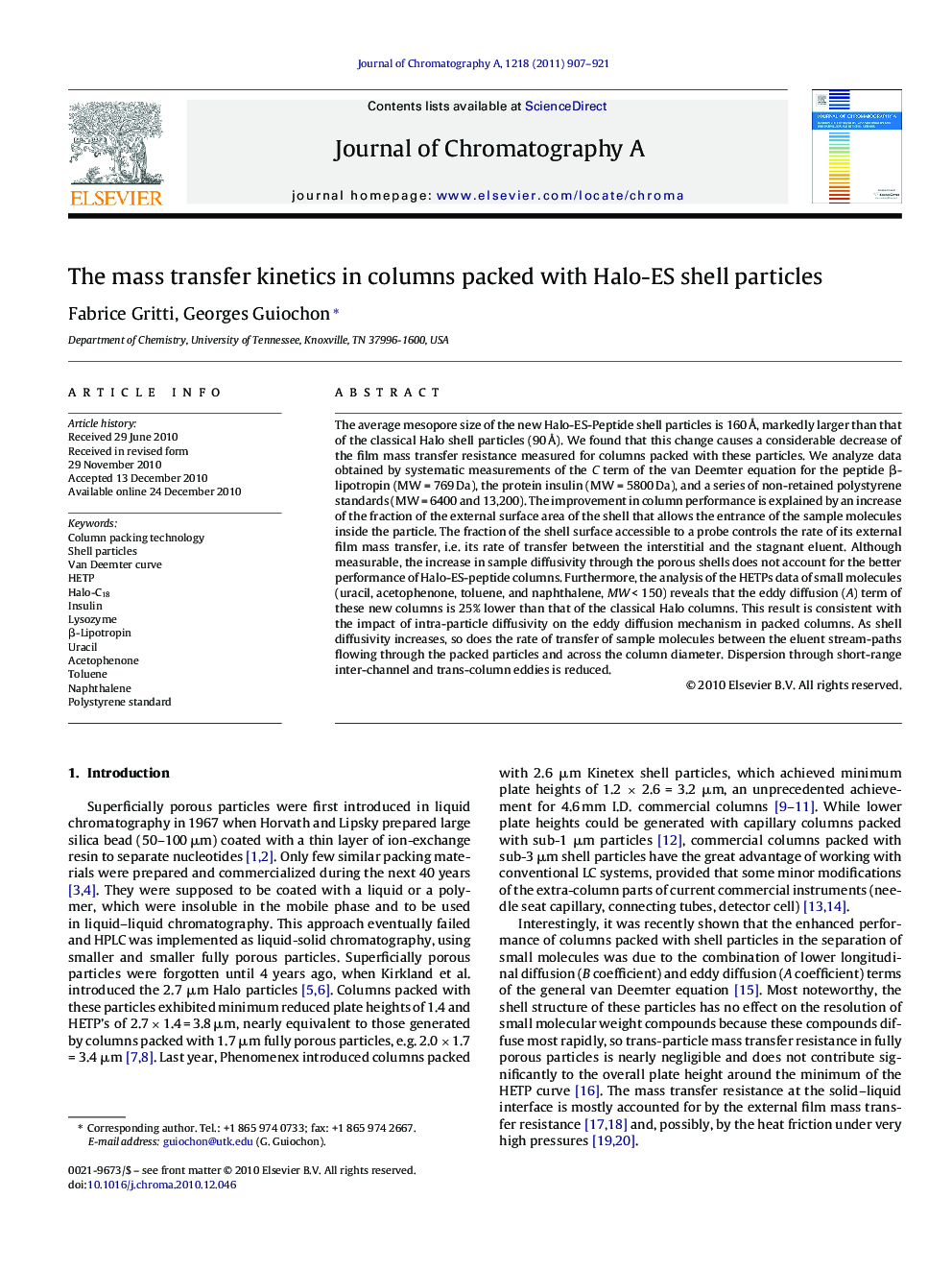| Article ID | Journal | Published Year | Pages | File Type |
|---|---|---|---|---|
| 1203193 | Journal of Chromatography A | 2011 | 15 Pages |
The average mesopore size of the new Halo-ES-Peptide shell particles is 160 Å, markedly larger than that of the classical Halo shell particles (90 Å). We found that this change causes a considerable decrease of the film mass transfer resistance measured for columns packed with these particles. We analyze data obtained by systematic measurements of the C term of the van Deemter equation for the peptide β-lipotropin (MW = 769 Da), the protein insulin (MW = 5800 Da), and a series of non-retained polystyrene standards (MW = 6400 and 13,200). The improvement in column performance is explained by an increase of the fraction of the external surface area of the shell that allows the entrance of the sample molecules inside the particle. The fraction of the shell surface accessible to a probe controls the rate of its external film mass transfer, i.e. its rate of transfer between the interstitial and the stagnant eluent. Although measurable, the increase in sample diffusivity through the porous shells does not account for the better performance of Halo-ES-peptide columns. Furthermore, the analysis of the HETPs data of small molecules (uracil, acetophenone, toluene, and naphthalene, MW < 150) reveals that the eddy diffusion (A) term of these new columns is 25% lower than that of the classical Halo columns. This result is consistent with the impact of intra-particle diffusivity on the eddy diffusion mechanism in packed columns. As shell diffusivity increases, so does the rate of transfer of sample molecules between the eluent stream-paths flowing through the packed particles and across the column diameter. Dispersion through short-range inter-channel and trans-column eddies is reduced.
